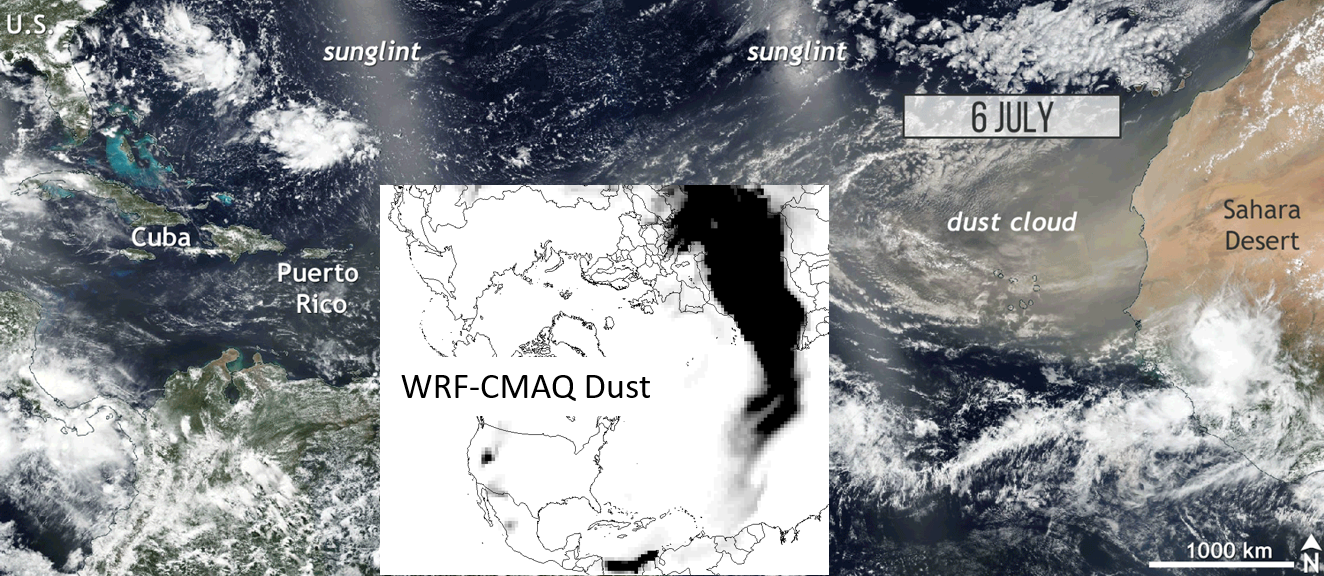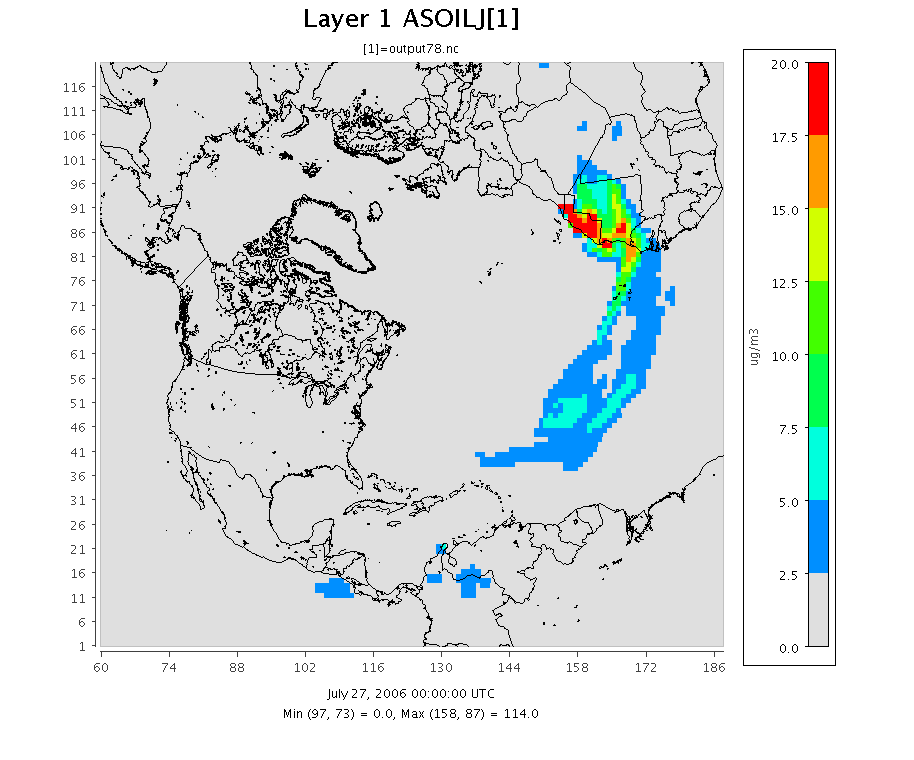Windblown Dust in CMAQ
Windblown dust, emitted from the surface of the earth to the atmosphere, has significant impacts on atmospheric phenomena, air quality, and human health. It contributes to the reduction of atmospheric visibility and long-range transport of organic chemicals, airborne bacterial species, and trace metals. Respiratory and cardiovascular disorders, meningococcal meningitis, conjunctivitis, and skin irritations are among the health problems that have been associated with exposure to dust.
CMAQ uses a physics-based model to estimate windblown dust emissions. It takes into account the effect of wind speed, surface roughness, soil moisture, vegetation coverage, soil type and texture, and air density in dust generation in a comprehensive and physically sound manner.
CMAQ uses information such as vegetation properties, soil moisture and wind speed from the meteorological model (e.g., the Weather Research and Forecasting Model). The dust module in CMAQ distributes soil crustal matter into several aerosol species including trace metals and inorganic chemicals, and therefore, has the potential to be a tool to study impacts of dust exposure on human health.

CMAQ can be used to estimate windblown dust emission in various regions of the world. Within the United States, the Southwest region, which is associated with strong winds over arid and semi-arid lands, is an important source of natural windblown dust emission affecting air quality. The figure above from Foroutan et al. (2017) shows the observed and simulated emission of particulate matter with diameter less than 10 microns (PM10/PM2.5) due to a dust outbreak on May 29-31, 2011. The averaged observed PM timeseries plot clearly depicts the dust event that the CMAQ model captures well once the new dust model is activated. The timing of the dust in CMAQ is also modeled with accuracy indicating that the meteorological model simulated near-surface wind that is responsible for the airborn dust.
In addition, the long-range transport of dust also plays an important role in the quality of air we breathe. Two examples are shown below. The first is a case in July 2019 using our near-real time modeling platform that leverages the hemispheric 108 km WRF-CMAQ coupled model.


References
Foroutan, H., Young, J., Napelenok, S., Ran, L., Appel, K.W., Gilliam, R.G., and Pleim, J.E. (2017). Development and evaluation of a physics-based windblown dust emission scheme implemented in the CMAQ modeling system. Journal of Advances in Modeling Earth Systems, 9, 585-608. doi: 10.1002/2016MS000823
